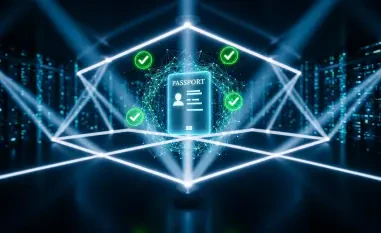Imagine a digital landscape where a single unpatched flaw in a hospital’s database system could halt critical operations, or a corporate network falls prey to attackers exploiting a hidden privilege escalation bug, threatening the entire infrastructure. This is the reality of cybersecurity in 2025, where Microsoft’s latest Patch Tuesday update addresses a staggering 81 vulnerabilities across various software platforms. This roundup dives into expert opinions, practical tips, and diverse perspectives on the significance of these patches, from zero-day threats to the balance between security and operational stability. The purpose is to distill insights from multiple sources, offering a comprehensive view of the challenges and strategies surrounding this critical update.
Unpacking Diverse Views on the Latest Security Update
This Patch Tuesday release has sparked intense discussion among cybersecurity professionals about the urgency of addressing 81 flaws, including zero-day vulnerabilities and privilege escalation risks. Many industry leaders emphasize the relentless pace of cyber threats, noting that organizations cannot afford delays in applying these updates. The consensus points to a heightened need for preparedness in an era where attackers continuously probe for weaknesses in widely used systems like Windows and SQL Server.
Differing opinions emerge on the prioritization of these patches. Some experts advocate for immediate deployment to mitigate risks, particularly in high-stakes environments such as healthcare and finance. Others caution that rushed updates could disrupt existing workflows, especially when compatibility with third-party tools is uncertain. This debate sets the stage for a deeper exploration of specific vulnerabilities and the strategies needed to navigate them effectively.
A recurring theme across discussions is the sheer scale of this update, which spans multiple software components. Analysts highlight that while not all flaws are rated as critical, their cumulative impact could be severe if exploited in tandem. This perspective underscores the importance of understanding the nuances of each vulnerability, prompting a closer look at expert insights on the most pressing issues within this release.
Breaking Down the Vulnerabilities: Expert Perspectives
Zero-Day Threats Under the Microscope
Two zero-day vulnerabilities, identified as CVE-2024-21907 affecting SQL Server and CVE-2025-55234 targeting Windows SMB, have drawn significant attention for being publicly disclosed yet unexploited. Cybersecurity researchers generally agree that the SQL Server flaw, which could trigger denial-of-service attacks through deeply nested JSON objects, poses a limited but notable risk. Its potential to disrupt critical operations in sectors reliant on constant uptime, such as emergency services, is a key concern echoed across analyses.
In contrast, opinions vary on the Windows SMB flaw, which enables remote exploitation via replay attacks. Some professionals view it as a more immediate threat due to its capacity for privilege escalation, while others argue that existing mitigations like SMB Server Signing offer sufficient protection if implemented correctly. The challenge lies in balancing these security measures with system compatibility, a point of contention among experts assessing organizational readiness.
A third perspective focuses on the broader implications of these zero-days in today’s threat landscape. Many stress that even unexploited vulnerabilities can become ticking time bombs if not addressed promptly, especially as attackers grow adept at weaponizing public disclosures. This shared concern drives recommendations for proactive monitoring and rapid patch deployment to stay ahead of potential exploits.
Privilege Escalation Risks: A Growing Concern
With 41 elevation of privilege (EoP) vulnerabilities patched, including critical flaws in Windows Kernel and Hyper-V marked as “exploitation more likely,” experts are sounding alarms about their role in amplifying cyberattack damage. There is widespread agreement that EoP flaws often serve as secondary vectors, exploited after initial breaches through phishing or other means, allowing attackers to wreak havoc by disabling defenses or spreading malware.
Divergent views surface on how organizations should prioritize these patches. Some cybersecurity specialists suggest focusing on environments with high exposure to initial access threats, arguing that EoP risks are most dangerous in such contexts. Others advocate for a blanket approach, urging comprehensive updates to prevent lateral movement within networks, regardless of perceived risk levels.
A practical tip shared by many in the field is the need for robust access controls alongside patching. This additional layer of defense can limit the fallout if an EoP flaw is exploited, a strategy seen as essential in complex IT ecosystems. The discussion highlights a collective push for tailored risk assessments to address these hidden dangers effectively.
Remote Code Execution and Other Emerging Threats
The update also tackles 22 remote code execution (RCE) vulnerabilities, prompting varied reactions on their severity and implications. Many experts note that while only a fraction carry critical ratings, RCE flaws remain a top concern due to their potential for direct system compromise. This view is particularly strong among those focused on industries where downtime is catastrophic, such as manufacturing or logistics.
A contrasting opinion emphasizes the interconnected nature of modern attacks, where RCE vulnerabilities are often chained with other flaws like EoP to maximize impact. Some analysts argue that this trend necessitates a holistic patching strategy rather than fixating on high CVSS scores alone. The insight points to a shift in how threats are evaluated, moving beyond isolated metrics to consider combined effects.
Further commentary reveals concern over less-discussed vulnerabilities in this update, such as those affecting niche components. Experts warn that overlooking these could create blind spots, especially for organizations with diverse software stacks. This perspective reinforces the need for thorough patch management to cover all bases in an increasingly complex threat environment.
Security vs. Stability: Navigating the Trade-Offs
The tension between bolstering security and maintaining operational stability is a hot topic following this update. Many in the industry acknowledge that while patches are vital, they can introduce compatibility issues with existing systems or third-party applications. This concern is particularly pronounced among IT managers tasked with ensuring seamless business operations.
Some professionals advocate for phased rollouts, supported by Microsoft’s audit tools to assess risks before full deployment. This cautious approach finds favor with those who have experienced disruptions from past updates, highlighting a preference for testing in controlled environments. The strategy aims to minimize unexpected downtime while still addressing critical flaws.
An alternative viewpoint pushes for faster adoption of advanced security features like Extended Protection for Authentication, despite potential hiccups. Proponents argue that the escalating sophistication of attacks justifies the temporary inconvenience of adapting systems. This split in opinion reflects a broader challenge in cybersecurity: finding equilibrium between protection and functionality in dynamic operational settings.
Key Takeaways from Industry Leaders
Synthesizing the insights gathered, a clear picture emerges of the critical nature of this Patch Tuesday release. Experts unanimously stress the urgency of addressing zero-day vulnerabilities, even if unexploited, due to their potential impact in sensitive sectors. The focus on privilege escalation flaws also garners consensus as a pervasive threat requiring immediate attention to prevent cascading damage.
Practical advice abounds, with many recommending a staged approach to patching, starting with high-risk systems and incorporating compatibility testing. Enabling mitigations such as SMB Server Signing is frequently cited as a stopgap measure where full updates are delayed. This guidance aims to empower organizations to tailor their response based on unique operational needs and exposure levels.
Another key insight is the multifaceted nature of modern cyber threats, where attackers exploit combinations of vulnerabilities. This understanding drives calls for comprehensive update strategies that go beyond prioritizing critical flaws. The collective wisdom points to a need for ongoing vigilance and adaptability in patch management to counter evolving attack methods.
Reflecting on a Critical Update Cycle
Looking back, this Patch Tuesday cycle stood out for its breadth and the depth of expert discourse it inspired. The identification of 81 vulnerabilities, including zero-days and privilege escalation risks, underscored the persistent challenges in securing digital infrastructure. The varied perspectives on deployment strategies and risk prioritization offered valuable lessons for navigating such complex updates.
Moving forward, organizations should consider adopting a layered defense approach, combining timely patches with robust monitoring and access controls. Exploring resources on Microsoft’s security blog or industry forums can provide deeper guidance on specific flaws and mitigation tactics. Taking proactive steps to assess system compatibility before full rollout also emerged as a prudent next step to avoid operational pitfalls.
Beyond immediate actions, fostering a culture of continuous improvement in cybersecurity practices remains essential. Investing in training for IT teams to better understand emerging threats and patch implications can strengthen resilience. These considerations pave the way for more effective responses to future updates, ensuring that security keeps pace with the ever-shifting threat landscape.













